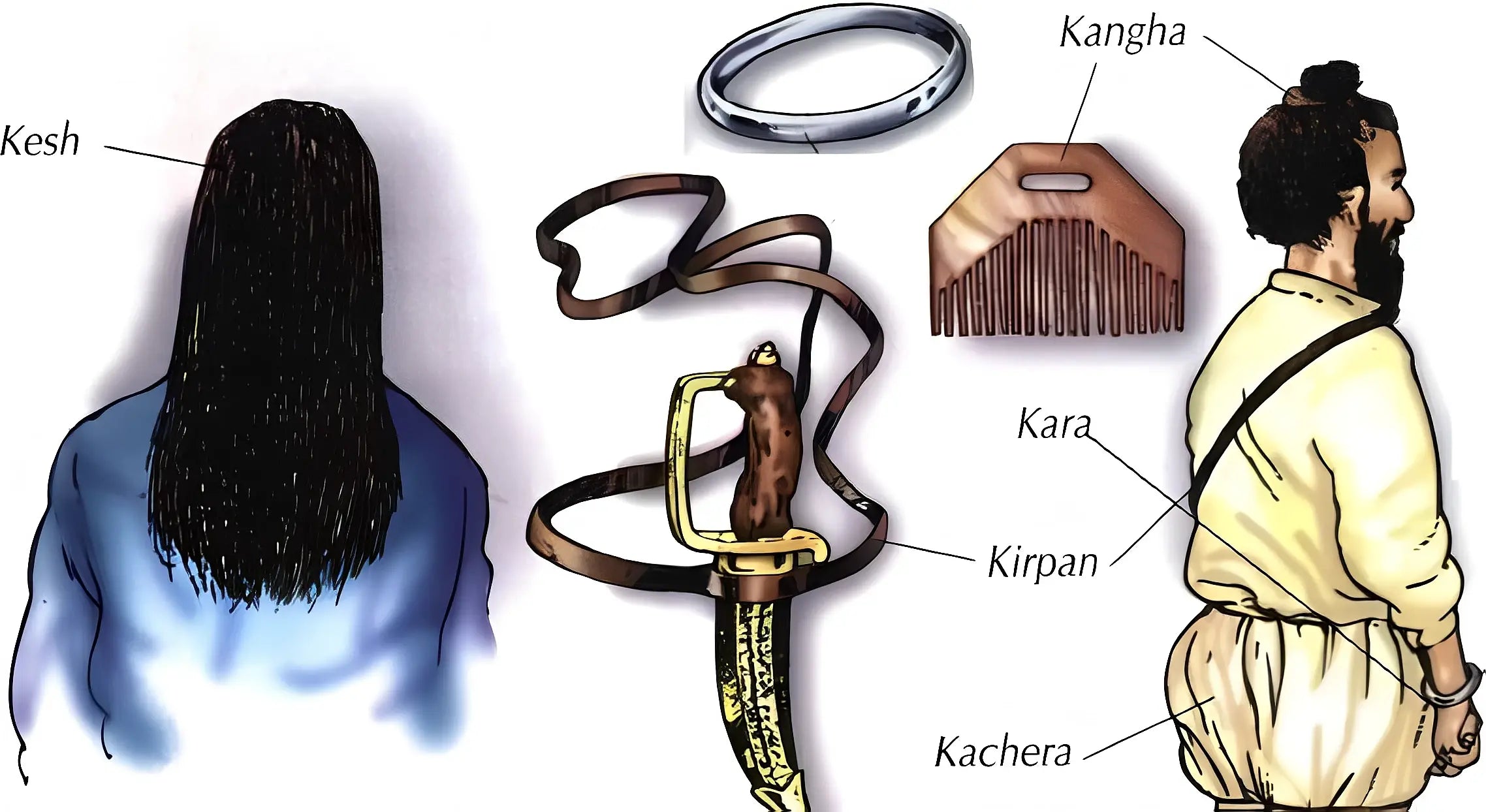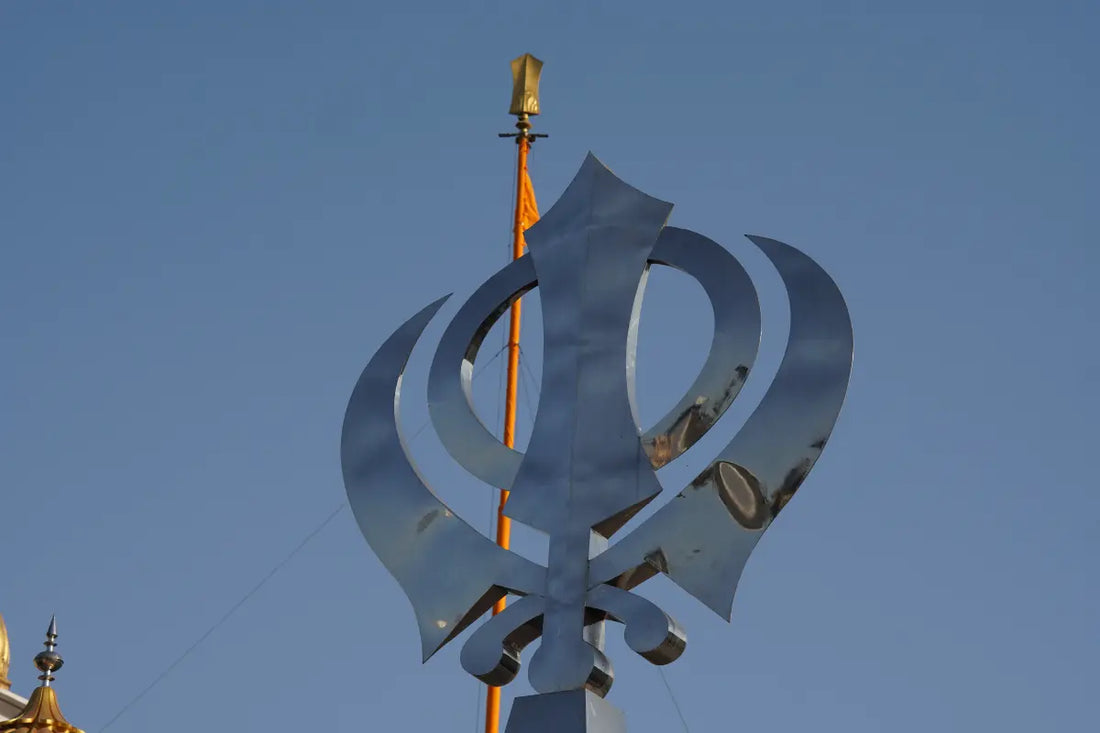The Five Ks — or Panj Kakaar — are not just items of clothing or accessories. They are sacred commitments, worn by initiated Sikhs (Khalsa) as daily reminders of faith, discipline, and purpose. Given by Guru Gobind Singh Ji in 1699 during the founding of the Khalsa, each of the Five Ks carries deep symbolic and practical meaning.
Whether you are on your Sikhi journey or simply seeking to understand it better, this guide explores the deeper purpose behind each K — and how they shape the life of a Sikh.
1. Kesh (Uncut Hair): Honouring God’s Creation
Kesh is a symbol of respect for the natural form that Waheguru has given. Keeping one’s hair uncut — and caring for it — represents acceptance, discipline, and devotion.
-
Hair is covered with a Dastar (turban), which also reflects dignity and identity.
-
Maintaining Kesh teaches patience and mindfulness in daily grooming.
-
It also signifies spiritual strength and courage in standing out.
How we support it: Our range of Dastar accessories and Shingar items helps honour this tradition with style and reverence.
2. Kanga (Wooden Comb): Order and Cleanliness
The Kanga is a small comb used to keep the hair clean and tidy. It is usually tucked into the hair under the Dastaar.
-
Symbolizes inner cleanliness and discipline.
-
Encourages care and organization, both physically and mentally.
-
A reminder that spirituality is tied to daily action and personal upkeep.
Tip: Use a simple, wooden Kanga to stay connected to its traditional roots.
3. Kara (Steel Bracelet): Unity and Accountability
The Kara is a circular steel bracelet worn on the wrist. It represents the eternal nature of Waheguru — with no beginning or end.
-
A constant reminder to act with honour.
-
Worn on the dominant hand, guiding every action.
-
Symbol of bondage to the Guru, not to ego or worldly temptations.
Our range: Akaal Accessories offers solid Sarbloh Karas, engraved options, and sizes for men, women, and children.
4. Kachera (Modest Undergarment): Self-Control and Dignity
The Kachera is a specially tailored undergarment that resembles boxer shorts. Worn under all clothing, it symbolizes modesty and spiritual alertness.
-
Represents self-restraint and moral behaviour.
-
Encourages Sikhs to maintain discipline in all areas of life.
-
Was historically practical for warriors in battle — allowing movement and readiness.
While not visible, its significance is immense — a quiet yet powerful commitment to virtue.
5. Kirpan (Ceremonial Sword): Courage and Protection
The Kirpan is perhaps the most well-known of the Five Ks. It is a small, curved ceremonial sword worn across the body using a Gatra (strap).
-
Symbolizes the duty to protect the weak and stand for truth.
-
Not a weapon of aggression, but a tool of justice.
-
Reminds Sikhs of their responsibility to confront oppression, even today.
Our offering: We craft high-quality Kirpans and Gatras for daily wear, weddings, and Amrit ceremonies — ethically and respectfully made.
Final Thoughts: Wearing the Guru’s Gift Every Day
The Five Ks are more than external symbols — they are internal commitments. Each one reminds the Khalsa of who they are, where they come from, and what they stand for. Whether you’re a practising Sikh or simply learning more, honouring the Five Ks is a step toward living a life of purpose, purity, and power.



